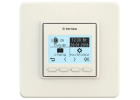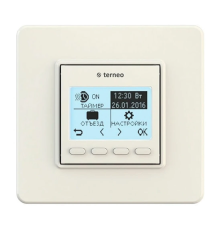
Thermostats are devices designed to maintain the necessary temperature conditions in rooms or processes. They are widely used for both domestic and industrial purposes.
Thermostats allow for automatic temperature control and regulation, making them indispensable in various heating, air conditioning, and ventilation systems, as well as in processes that require precise thermal conditions.
They are equipped with various sensors, such as thermistors or thermocouples, which constantly monitor the temperature and transmit information to the thermostat. Based on the received data, the device makes decisions about necessary changes in the thermal regime and activates corresponding systems, such as turning on or off heating or air conditioning.
Thermostats have various functions and operating modes, such as time control, day/night settings, different programs for turning on and off according to user needs. Some models can be controlled through special applications on smartphones or remote controls.
They also ensure efficient energy use, as they automatically adjust thermal regimes according to current needs, preventing excessive energy consumption and saving resources accordingly.
Thermostats are reliable and user-friendly devices capable of providing comfortable temperatures in rooms or accurately maintaining the required thermal regime in processes. Their use allows for significant improvement in living and working conditions, as well as reducing energy costs.
Thermostats allow for automatic temperature control and regulation, making them indispensable in various heating, air conditioning, and ventilation systems, as well as in processes that require precise thermal conditions.
They are equipped with various sensors, such as thermistors or thermocouples, which constantly monitor the temperature and transmit information to the thermostat. Based on the received data, the device makes decisions about necessary changes in the thermal regime and activates corresponding systems, such as turning on or off heating or air conditioning.
Thermostats have various functions and operating modes, such as time control, day/night settings, different programs for turning on and off according to user needs. Some models can be controlled through special applications on smartphones or remote controls.
They also ensure efficient energy use, as they automatically adjust thermal regimes according to current needs, preventing excessive energy consumption and saving resources accordingly.
Thermostats are reliable and user-friendly devices capable of providing comfortable temperatures in rooms or accurately maintaining the required thermal regime in processes. Their use allows for significant improvement in living and working conditions, as well as reducing energy costs.
Thermostat Terneo Pro (white) - for underfloor heating
Thermostat Terneo Pro (white)
Thermostat Terneo Pro (white) is a universal device designed specifically for regulating underfloor heating systems. It ..
1 450.00 грн
Showing 1 to 1 of 1 (1 Pages)

